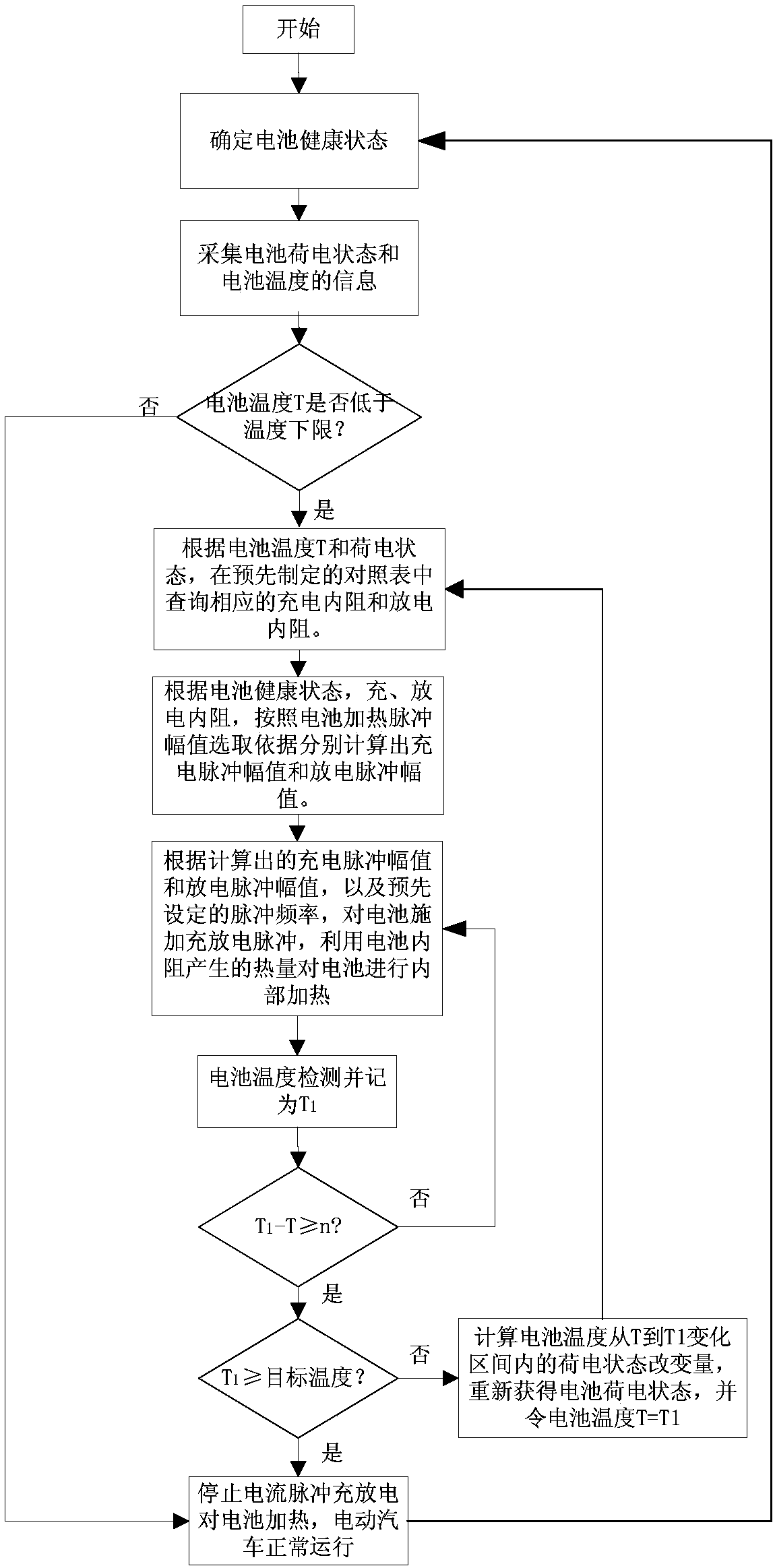A battery heating method based on battery state of health
A technology for battery health status and battery heating, applied in secondary batteries, circuits, measuring electricity, etc., can solve problems such as accelerated battery decay, battery heating, and troublesome battery pack balance, so as to suppress the impact of battery aging and increase accuracy. Effect
- Summary
- Abstract
- Description
- Claims
- Application Information
AI Technical Summary
Problems solved by technology
Method used
Image
Examples
Embodiment Construction
[0043] In the interest of clarity and conciseness, not all features of an actual implementation are described in this specification. It should be understood, however, that in developing any such practical embodiment, many implementation-specific decisions must be made in order to achieve the developer's specific goals, such as meeting those constraints related to the system and business, and those Restrictions may vary from implementation to implementation. Furthermore, it should be understood that development work, while potentially complex and time-consuming, would be a routine undertaking for those skilled in the art having the benefit of this disclosure.
[0044] Here, it should also be noted that, in order to avoid obscuring the present invention due to unnecessary details, the application documents only show device structures and / or processing steps that are closely related to the solution according to the present invention, and omit Other details not relevant to the pr...
PUM
 Login to View More
Login to View More Abstract
Description
Claims
Application Information
 Login to View More
Login to View More - R&D
- Intellectual Property
- Life Sciences
- Materials
- Tech Scout
- Unparalleled Data Quality
- Higher Quality Content
- 60% Fewer Hallucinations
Browse by: Latest US Patents, China's latest patents, Technical Efficacy Thesaurus, Application Domain, Technology Topic, Popular Technical Reports.
© 2025 PatSnap. All rights reserved.Legal|Privacy policy|Modern Slavery Act Transparency Statement|Sitemap|About US| Contact US: help@patsnap.com

